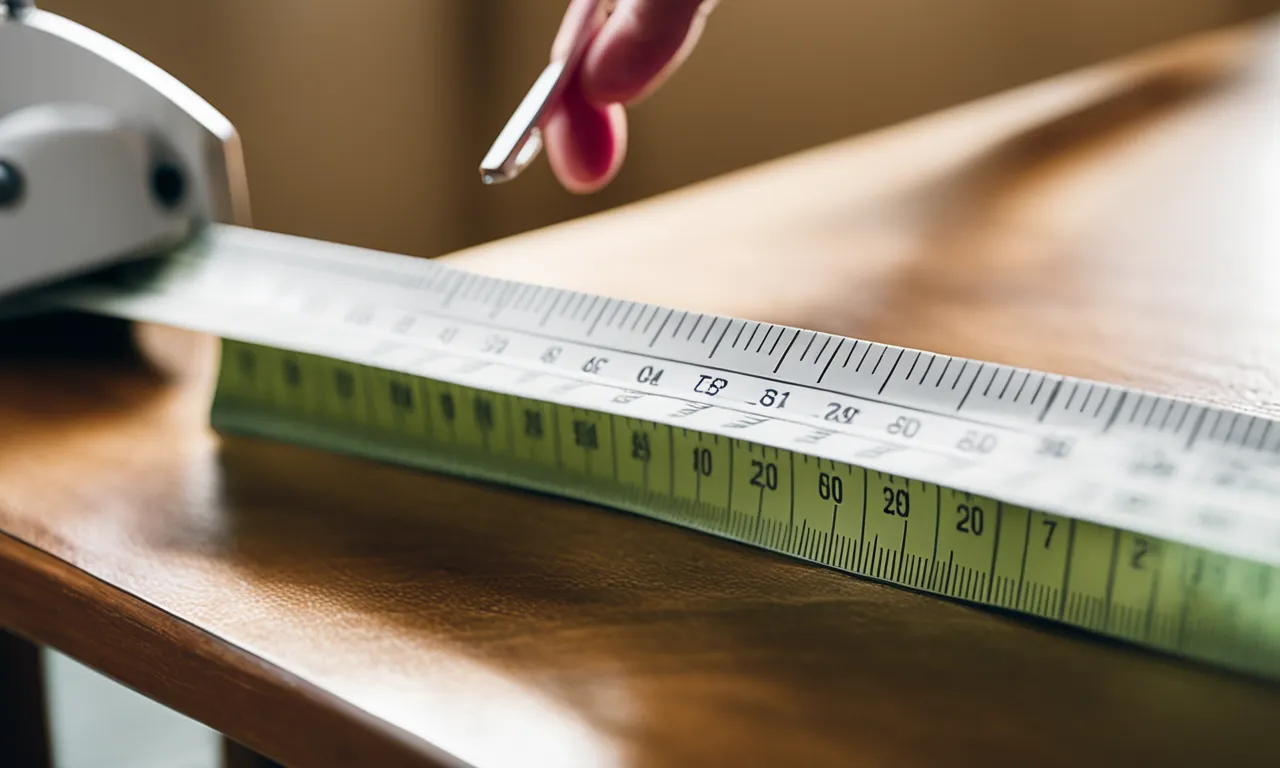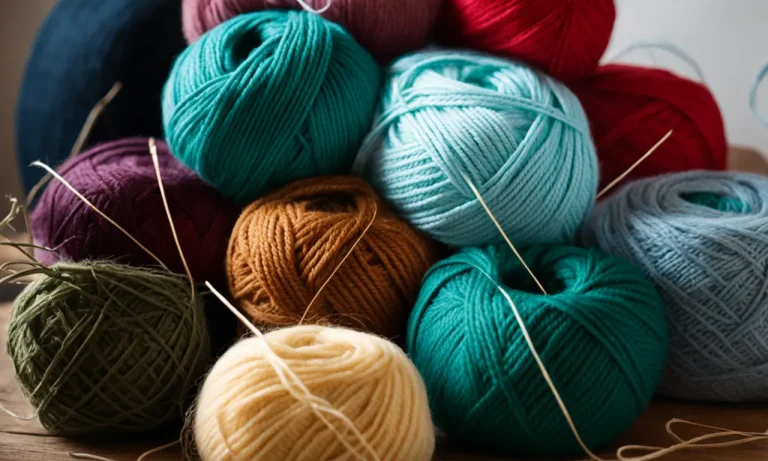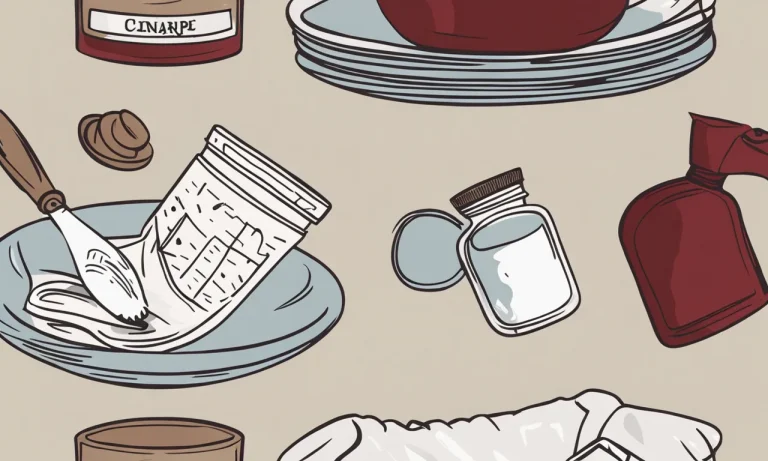How To Accurately Measure Yards Of Fabric: A Step-By-Step Guide
Figuring out how much fabric you need for a sewing project can be tricky, especially when the pattern calls for yardage amounts. If you want your finished garment or craft to turn out just right, accurately measuring fabric yardage is a must.
If you’re short on time, here’s a quick answer to your question: To measure yards of fabric, use a tape measure or fabric ruler, keeping the fabric flat on a table without pulling or stretching it. Measure from one cut edge to the other parallel edge to get the width.
For length, start at one end and measure to the other end in yard increments. Multiply width by length to get the total yardage.
In this comprehensive guide, we’ll walk through everything you need to know about measuring fabric yardage. You’ll learn techniques for measuring different widths and lengths of material, what tools work best, how to calculate the total yards, and common mistakes to avoid.
Use the Right Tools
Tape measure or fabric ruler
When it comes to accurately measuring yards of fabric, having the right tools is essential. A tape measure or a fabric ruler is the first tool you’ll need. These tools are designed specifically for measuring fabric and will give you precise measurements.
Make sure to choose a tape measure or ruler that is long enough to measure the entire length of the fabric you are working with.
Fabric marker or chalk
Another tool you’ll need is a fabric marker or chalk. These tools are used to mark the fabric with measurements, making it easier to cut and sew accurately. Fabric markers can come in different colors, allowing you to choose a color that contrasts well with the fabric you are working with.
Chalk is a popular choice as it can easily be wiped away after you’re done measuring.
Pins
Pins are also important when measuring fabric. They help keep the fabric in place while you measure and cut. It’s recommended to use flat-head pins, as they are less likely to snag the fabric. Place the pins along the edge of the fabric to hold it securely in place, ensuring accurate measurements.
Pro tip: Before measuring, make sure the fabric is smooth and flat. Any wrinkles or folds can affect the accuracy of your measurements. Ironing the fabric beforehand can help eliminate any creases.
For more information on measuring fabric accurately, you can visit Sew4Home.com, a reputable website that provides detailed guides and tutorials on sewing and fabric-related topics.
Prepare the Fabric
Before measuring yards of fabric, it is important to properly prepare it to ensure accurate measurements. Here are some steps to follow:
Make sure the fabric is flat
Start by laying the fabric on a flat surface, such as a cutting table or the floor. This will help prevent any distortion or stretching that may occur if the fabric is not properly laid out. It is important to have a smooth and even surface to work with.
Smooth out any wrinkles or folds
Take the time to smooth out any wrinkles or folds in the fabric. This can be done by gently pulling and smoothing the fabric with your hands. The goal is to have a flat and evenly distributed piece of fabric to work with.
It is important to note that wrinkles or folds can affect the accuracy of your measurements, so it is best to take the time to ensure the fabric is as smooth as possible.
Square off the edges
Before measuring, it is important to ensure that the edges of the fabric are squared off. This means that the edges are straight and at right angles to each other. To do this, use a ruler or a straight edge to align the edges of the fabric and make sure they are perpendicular.
This step is crucial to ensure accurate measurements, especially if you are planning to cut the fabric into specific shapes or sizes.
By following these steps to prepare the fabric, you can ensure that your measurements are accurate and reliable. Remember to take your time and double-check your measurements before cutting or sewing, as accuracy is key to a successful project!
Measure Width Accurately
When it comes to measuring the width of your fabric, accuracy is key. Follow these steps to ensure you get the most precise measurement:
Lay tape measure or ruler from one cut edge to the other
Start by laying your tape measure or ruler horizontally across the fabric, from one cut edge to the other. Make sure that the tape measure is straight and not tilted.
Don’t pull or stretch the fabric
It’s important not to pull or stretch the fabric while measuring the width. This can lead to inaccurate measurements and affect the final outcome of your project. Keep the fabric relaxed and in its natural state.
Read measurement at the exact edge, not over the edge
When reading the measurement, make sure to position your tape measure or ruler at the exact edge of the fabric. Avoid reading the measurement over the edge, as this can result in an incorrect measurement. Take your time to ensure you are reading the measurement accurately.
Remember, accuracy is crucial when measuring fabric. By following these steps, you can be confident in obtaining precise measurements for your sewing or crafting projects.
Measure Length Precisely
When it comes to accurately measuring yards of fabric, it is essential to measure the length precisely. Here are a few steps to help you achieve accurate measurements:
Mark yard increments with pins or fabric marker
Start by marking yard increments on the fabric using either pins or a fabric marker. This will serve as a guide to ensure that you measure the fabric correctly. Place the pins or make small marks at every yard interval along the edge of the fabric.
Measure from one end to the other in 1-yard sections
Next, measure the fabric from one end to the other in 1-yard sections. Start at the edge where you have marked the first yard increment and measure until the next pin or mark. Repeat this process for each yard increment until you reach the end of the fabric.
For partial yards, measure from last pin mark to end
If you need to measure a partial yard, start from the last pin mark or fabric marking and measure to the end of the fabric. This will give you an accurate measurement for the partial yard.
By following these steps, you can ensure that you accurately measure yards of fabric, whether it is for a sewing project or any other purpose.
Calculate Total Yardage
Multiply width by length in yards
Calculating the total yardage of fabric is essential when planning a sewing or crafting project. To begin, measure the width and length of the fabric in yards. The width is the measurement across the fabric from selvage to selvage, while the length is the measurement from one end of the fabric to the other.
Once you have these measurements, multiply the width by the length to determine the total yardage of the fabric. For example, if the width is 45 inches and the length is 3 yards, the total yardage would be 135 square yards.
Round up partial yards to the nearest 1/8 yard
When working with fabric, it’s important to account for any partial yards that may be present. To do this, round up the partial yard to the nearest 1/8 yard. For instance, if the calculation in the previous step yields a total yardage of 135.5 yards, round it up to 135.625 yards.
This ensures that you have enough fabric to complete your project without running short.
Add yardages together for multiple pieces
If you are working with multiple pieces of fabric for a project, you will need to add the yardages together. For example, if you need two pieces of fabric that are each 3 yards long, the total yardage would be 6 yards.
By adding the yardages together, you can accurately determine the amount of fabric needed for your project.
Remember, it’s always a good idea to purchase a little extra fabric to account for any mistakes or variations in pattern placement. This way, you can ensure that you have enough fabric to complete your project without having to make any last-minute adjustments.
For more detailed information about fabric measurement and yardage calculations, you can visit sewmuchado.com or sailrite.com.
Avoid Common Mistakes
Don’t pull, stretch or twist fabric when measuring
When measuring yards of fabric, it’s important to handle it with care and avoid any unnecessary stretching or twisting. This can lead to inaccurate measurements and ultimately affect the outcome of your project.
Keep in mind that fabrics have different levels of stretchability, so it’s crucial to handle each type accordingly. By handling the fabric gently and avoiding any pulling or stretching, you can ensure that your measurements are accurate and reliable.
Measure along the grainline, not diagonally
One common mistake many people make when measuring fabric is measuring diagonally instead of along the grainline. The grainline refers to the threads that run parallel to the selvage edge of the fabric. Measuring along this line ensures that you are getting the true length or width of the fabric.
Measuring diagonally can lead to inaccurate measurements and can throw off your entire project. So, always make sure to measure along the grainline for precise and accurate measurements.
Start from a squared-off edge, not the salvage edge
When measuring yards of fabric, it’s important to start from a squared-off edge rather than the salvage edge. The salvage edge is the finished edge of the fabric that prevents it from fraying. However, it can be uneven or distorted, which can result in inaccurate measurements.
To ensure accuracy, trim off the salvage edge and start your measurements from a squared-off edge. This will give you consistent and reliable measurements throughout your project.
Measure each piece individually
Another common mistake is measuring multiple pieces of fabric together, assuming they are all the same length. However, fabrics can have slight variations in length, even if they come from the same bolt. To avoid inaccuracies, it’s essential to measure each piece of fabric individually.
This ensures that you have precise measurements for each piece and eliminates any discrepancies that may occur. Taking the time to measure each piece separately will save you from potential headaches and frustrations down the line.
By avoiding these common mistakes when measuring yards of fabric, you can ensure accurate and reliable measurements for your sewing or crafting projects. Remember to handle the fabric gently, measure along the grainline, start from a squared-off edge, and measure each piece individually.
These simple steps will help you achieve the best results and save you time and effort in the long run.
Conclusion
Accurately measuring how much fabric you need is a key skill in sewing and crafting. With the right tools and techniques, you can precisely calculate yardage to have just enough material, without the frustration of running short.
Just be sure to keep the fabric flat, square the edges, measure width separately from length, and multiply to get the total yards needed. Avoid stretching, twisting or eyeballing. With some practice, you’ll be able to measure fabric yardage like a pro for any project.







